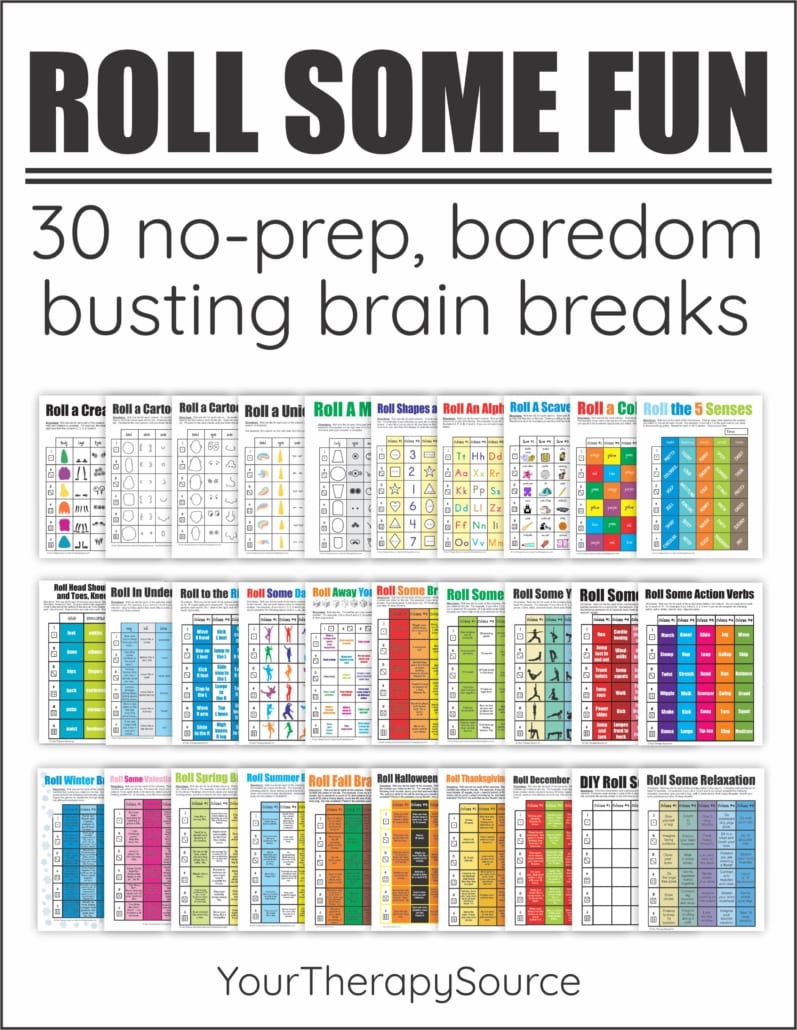The Movement and Learning Connection: Why It Matters

Did you know that movement is essential for learning? It’s true! In fact, movement helps to stimulate the brain and promote better learning. That’s why it’s so important for children to get up and move around often. This free handout discusses the movement and learning connection in more detail. We’ll talk about how movement helps to improve cognitive function, focus, memory, and more. So download our handout today and learn more about how movement can help your child learn and grow! You can download a FREE handout at the bottom of this post.

Exercise Posters for Kids – Printed
WHAT IS THE MOVEMENT AND LEARNING CONNECTION?
The movement and learning connection is the relationship between physical activity and cognitive development. It’s based on the idea that movement can help to stimulate the brain and positively affect a child’s learning experience.
When children are physically active, their brains release hormones like dopamine, serotonin, and endorphins which can improve concentration and focus. Additionally, physical activity helps to form neural connections in the brain that improve memory, language, and problem-solving skills.
You can read more on how physical activity impacts academic performance.
HOW CAN MOVEMENT HELP CHILDREN LEARN?
Movement can help children learn in a variety of ways. Here are just a few:
1. Movement can increase concentration and focus. When children are physically active, their brains release neurotransmitters that help to improve concentration and focus. This can make it easier for them to stay on task and complete assignments.
2. Movement can boost memory recall. Physical activity helps to form strong neural connections in the brain which supports improved memory recall This can be beneficial when studying for tests and exams.
3. Movement can increase creativity and problem-solving skills. Physical activity helps to stimulate the brain and can lead to greater creative thinking and improved problem-solving skills. This can be beneficial in all areas of learning, from math to writing to art.
Read more on gross motor skills and academics.
HOW CAN YOU PROMOTE THE MOVEMENT AND LEARNING CONNECTION AT SCHOOL?
There are several ways to promote the movement and learning connection at school. Here are a few ideas:
1. Incorporate physical activity into lessons. Movement can be integrated into any lesson plan, from math to language arts to science to social studies. For example, you could have students answer questions while standing up or move around the classroom to simulate an experiment.
2. Create a “movement break” time. During breaks or transitions, have students engage in physical activity such as stretching, hopping, jogging in place, or doing jumping jacks. This will help to rev up their energy and focus for the next activity.
3. Offer physical activities at recess. Provide students with a variety of fun and engaging physical activities during recess such as kicking a ball, throwing a frisbee, or playing tag. This will help them get the movement they need throughout the day.
By implementing these strategies, you can take advantage of the movement and learning connection and help your students learn more effectively. So get started today and watch their learning soar!
In summary, movement is essential for learning and should be encouraged in the classroom. By implementing strategies such as incorporating physical activity into lessons, creating a “movement break” time, and offering physical activities at recess, you can help your students reap the benefits of the movement and learning connection.

Roll Some Fun Brain Breaks UPDATED
WHAT ARE THE BENEFITS OF MOVEMENT IN THE CLASSROOM?
The benefits of movement in the classroom are numerous. Studies have shown that physical activity can help improve concentration and focus, boost memory recall, increase creativity and problem-solving skills, and reduce stress and anxiety.
Physical activity can lead to improved classroom behavior and academic performance. All of these benefits make it clear why movement should be encouraged in the classroom.
HOW CAN YOU PROMOTE MOVEMENT AT HOME?
There are many ways to promote movement at home. Here are a few ideas:
1. Encourage your child to go outside and play for at least 30 minutes each day. This can help to stimulate their brains and improve cognitive functioning.
2. Set aside time for physical activities like yoga, dance, or even running around the house. This can help to improve concentration and focus while also giving children an outlet for their energy.
3. Leave time for active breaks throughout the day. This can include activities like stretching, jumping jacks, or walking in place during study sessions or when completing chores.
WHAT IS MOVEMENT-BASED LEARNING?
Movement-based learning is a term used to describe the use of physical activity to support cognitive development and learning. It uses movement as an integral part of learning, to help students engage with content and retain information.
Movement based learning has been shown to increase focus, memory recall, creativity, problem-solving skills and more. Examples of movement based learning activities include dance, yoga, physical games, active problem-solving, and outdoor activities.
By encouraging your child to move often, you can help to improve their learning experience. So, keep the movement and learning connection in mind as you go about your day!
DOWNLOAD YOUR FREE HANDOUT



